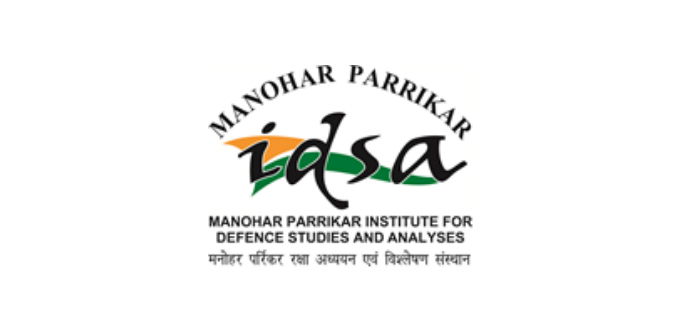
- This event has passed.
Report of the Monday Morning Meeting on “Tracking Migration and Conflict: A Field Study of Bordering Indian States Amidst the Myanmar Civil War”

Dr. Om Prakash Das, Research Fellow, Manohar Parrikar Institute of Defence Studies and Analyses (MP-IDSA), spoke on, “Tracking Migration and Conflict: A Field Study of Bordering Indian States Amidst the Myanmar Civil War” at the Monday Morning Meeting held on 19 May 2025. Dr. Opangmeren Jamir, Associate Fellow, MP-IDSA moderated the meeting. Ambassador Sujan R. Chinoy, Director General, MP-IDSA and scholars of MP-IDSA participated in the discussion.
Executive Summary
The ongoing civil war in Myanmar has significantly impacted the Indian states bordering Myanmar, particularly in the Northeast. These states—Manipur, Mizoram, Nagaland, and to a lesser extent, Arunachal Pradesh—are experiencing a range of challenges due to the conflict. India has initiated measures such as fencing the 1,643 km border and suspending the Free Movement Regime. However, these actions have faced resistance from a few local communities in Mizoram and Manipur, highlighting the delicate balance between security concerns and maintaining cross-border relations. The situation remains fluid, with ongoing developments influencing the dynamics between Myanmar and India’s northeastern states.
Detailed Report
In his opening remarks, Dr. Opangmeren gave a brief overview of the Myanmar civil war and the situation in the Northeast region of India due to the civil war. He mentioned that India has been heavily investing in Myanmar’s infrastructure. Peace and stability are of dire need in Myanmar and one of the major concerns for India includes trafficking. The civil war’s impact on the Northeast states has made bilateral ties between India and Myanmar more complicated.
Dr. Om Prakash Das began his presentation which was based on his field visit to the Northeast states. He gave an overview and background of the 2021 military coup in Myanmar which led to a prolonged civil war. After the coup, several rebel groups came together and around 800 airstrikes were carried out by the Myanmar military. The civil war led to a major humanitarian crisis and around 3.5 million people have been internally displaced.
Dr. Das stated that India shares a 1,643 km porous border with Myanmar, directly affecting Manipur and Mizoram. Dr. Das further remarked that India’s efforts towards border fencing are ongoing, in order to prevent illegal activities including the inflow of refugees to these states. Dr. Das met several officials in these states and a few people observed that there has been a huge change in the demography in a few districts of Manipur. Similar to Myanmar’s divisions, the fighting in Manipur has intensified ethnic tensions between the Kuki-Zo and Meitei populations, which are driven by cross-border contacts. Humanitarian issues in Mizoram necessitate approaches that combine relief with community resilience. Dr Das mentioned that a senior official from the Mizoram home department and some of the civil society groups are concerned about unregistered refugees since this causes local people to get upset which makes it harder to share resources. In response to the influx of refugees, Manipur has either sent them back or kept them in government facilities like Mandaps. The continuous violence between communities in Manipur derailed the Kuki-Zo Council’s intentions to construct refugee camps in Churachandpur.
Dr. Das further explained that Mizoram is home to the Zo-Chin-Kuki tribes and there are around 30,000-40,000 registered refugees. Mizoram remains a lifeline for cross-border aid. One young PhD. scholar in Churachandpur stated that there have been incidents, where injured People’s Defence Forces (PDF) fighters, took shelter in Manipur. He stated that the Head of the Kuki-Zo council said that ‘brotherhood still lingers. The demarcation is artificial—a British mistake. Yet, political narratives label them as illegal immigrants and “narco-terrorists”. For this field visit, Dr. Das also visited a few refugee camps in Mizoram.
According to Dr. Das, the Myanmar conflict has also led to the intensification of drugs and arms trafficking. Reports indicate Manipur police weapons ended up with Myanmar rebels, highlighting the intertwined nature of the conflicts. A businessman in Mizoram remarked that India must engage the Chin National Army and the Arakan Army. Furthermore, cross-border trade has also collapsed due to the conflict. Dr. Das then went on to share his experience regarding the conflict and identity patterns and he stated that the Zo Reunification Organisation (ZORO) has said that “Myanmar’s Chin Brotherhood seeks federalism, like India’s states. Military rule must end”.
Dr. Das spoke about the prospects for peace and policy recommendations based on his field visit. He mentioned that India and China’s tacit manoeuvring in Myanmar adds complexity.
In Manipur, the Kuki-Zo Council suggests a “cessation of hostility,” reflecting Myanmar’s need for diplomacy. The Kuki-Zo Council acknowledges that peace will be challenging if the junta doesn’t give up. Dr. Das concluded his presentation by suggesting some aspects for further investigation such as the influence of tribal practices and vested interests, effective refugee management amidst border fencing initiatives, potential policy course corrections should the crisis in Myanmar persist, the political leadership and the possibility of leveraging the uncertainty.
Q & A Session
The Director General in his comments suggested bringing in the perspective of Bangladesh, keeping in mind the current bilateral ties India has with Bangladesh and how important it is to work towards stable borders with Myanmar to enhance greater connectivity in Southeast Asia. There was an insightful exchange of views among scholars.
The Report was prepared by Ms. Simran Walia, Research Analyst, Southeast Asia and Oceania Centre, MP-IDSA.




